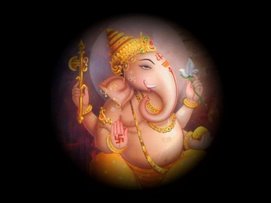The flag: For being the country's most powerful symbol
For Indians the flag is life. It's life. The national life. It should generate enthusiasm, should generate integrity. It generates love for the nation.
August 15, 1947, the most important day in the history of India, the day when the long suppressed nation found utterance, it was the day when India got independence from the British rule. The stroke of the midnight brought with it a ray of new hope for India, as our first Prime Minister, Jawaharlal Nehru said, the world was asleep but India awoke to life and freedom. A new nation was born! Since then August 15 is celebrated as the independence day in India every year.
Happy Independance!!!
Tricolor, the flag of India, is a representative of the independent Republic of India. A symbol that embeds in itself the history of India's long struggle for Independence Day, it was adopted as the national flag of India in its present form on July 22, 1947. Serving as the national flag of Dominion of India from 15th August 1947 to 25th January 1950, it thereafter became the national flag of the Indian Republic. First of all designed by Sister Nivedita, the flag of India passed through many stages before it was finally adopted by the Constituent Assembly of India as the national flag of India.
The journey of Indian flag started in 1904 when sister Nivedita, an Irish disciple of Swami Vivekananda, designed the first flag for India. This flag, containing red and yellow color stripes and Bonde Mataram written on it came to be known as Sister Nivedita's flag. The next version of the India flag came in 1907, it was designed by Madam Bhikaji Cama, Veer Savarkar and Shyamji Krishna Varma and had three stripes of - green, saffron and red color.
In 1916, Pingali Venkayya designed a flag with two colors and a 'charkha' drawn across them. This design was not much appreciated as the religious interpretation of the colors resulted in it being associated with only Hindu and Muslim communities. In 1917 and 1921 two other modifications of the national flag came into being the former was adopted by the Home Rule League as their official flag.
Finally in 1931, Pingali Venkayya came out with another modified version for flag of India, which had three color stripes of saffron, white and green. The white color stripe in the middle had a Charkha. This flag, considered to be the representative of all the communities of India was taken as the official flag of the Indian National Congress. This flag was adopted as the National Flag of India with minor modifications- Charkha was replaced by the 'Dharma Chakra' in the middle of the white stripe.
On July 22, 1947 when the flag was taken as the national flag of India, it acquired a new meaning, from the representative of the different communities of India, it became the representative of a nation. The three colors of the India flag have special significance. Topmost saffron color represents valor, sacrifice and renunciation of Indians whereas the middle white color is the symbol of purity and India's belief in peaceful co-existence while the lowermost green color signifies prosperity. A national symbol of India, Indian flag commands utmost respect from every Indian and is a binding force for all the countrymen across the globe.
Some Important facts:
- The ratio of the width of the flag to its length is 2:3
- The Indian flag is made up of just one fabric, Khadi.
- When the national flag is carried in a procession or parade, as per the Flag Code of India, it shall be on the marching right or in front of the center of the line, if there is a line of other flags.
- The flag cannot be used as clothing below the wais
![[1906 Flag of India]](http://www.crwflags.com/FOTW/images/i/in-1906.gif)
![[1931 Flag of India]](http://www.crwflags.com/FOTW/images/i/in%7Dcongp.gif)







No comments:
Post a Comment